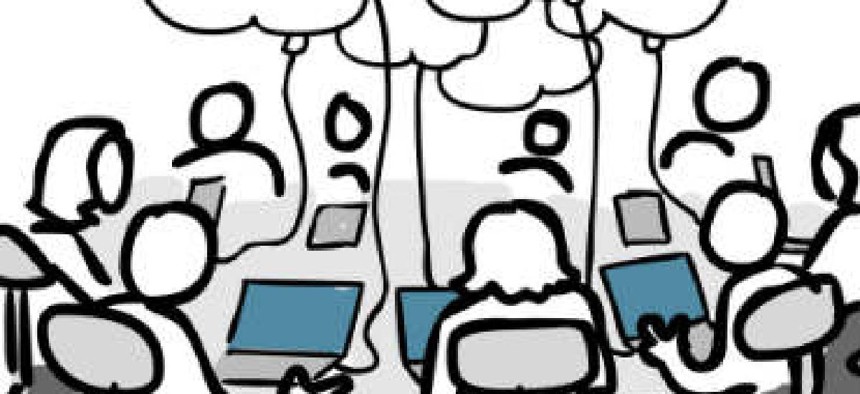HHS' opioid code-a-thon: Challenges go mainstream and mission-critical

Steve Kelman suggests the upcoming HHS contest could mark a new maturity for challenges as a procurement tool.

I have been a fan of challenges -- also known as procurement contests -- for years. I wrote about them for the first time in 2009 when one of the only examples around was a contest DARPA had launched in to see who could develop an all-terrain vehicle, and have returned to the topic several times since.
Challenges are a procurement method where the government presents a solution on which it wants people to work and specifies a prize (usually cash) that will go to the winner or winners. Anyone can enter.
Such contests are a dramatic form of what is often called "pay-for-success" contracting because payment goes out only if contestants' efforts actually work. They are tailor-made for attracting new participants to the federal marketplace, since they do not require knowledge of how to respond to an RFP or other arcana of government contracting. There have been scores if not hundreds of challenges since 2009, and typically they have attracted many students and garage players.
Last week, when President Donald Trump announced the government's anti-opioid effort, the Challenge.gov website announced that the Department of Health and Human Services “is looking to leverage the full potential of data and technology to address the opioid crisis by hosting an Opioid Code-a-Thon.”
Up to 25 teams of three to five participants each will work all day on Dec. 6 at the Great Hall of HHS headquarters to develop innovative solutions to three elements of the opioid crisis -- opioid treatment, prevention of opioid misuse and identification of who is most at risk. (The timed contest shares features with the idea of tech demos in procurement source selection that I recently featured in a blog.)
The teams will be provided with relevant government opioid-related datasets as a basis for their work. Winners will be announced the very next day -- by government standards, this whole effort moves at the speed of light! The maximum prize for each of the three tracks is $10,000.
That HHS announced a challenge as a way to help with this problem the day before the president announced the initiative is quite a statement. While I have been extremely impressed by challenges -- when asked about procurement innovations over the last decade, I always put it at the top of my list -- they have nonetheless been somewhat at the periphery of the system. Contests typically are not on a checklist of approaches to be routinely considered by contracting folks. And the topics of challenges frequently are tangential to an agency’s central mission -- while unfair, challenges have a bit of a reputation among skeptics for involving activities such as design of a new agency logo.
The opioid code-a-thon suggests this may be changing. Challenges are becoming a more accepted contracting alternative, and they are involving areas more central to agency missions.
I spoke with Dr. Mona Siddiqui, HHS' chief data officer, about how the code-a-thon had come about. She said the CTO office had recognized a need at HHS to improve how data is integrated and shared across agencies at HHS to manage programs.
"Rather than doing a landscape analysis, we thought a better way was to take a crisis like opioids which entire department understands and that has been a department priority, and to use that domain to understand data use better," Siddiqui said.
Work on this started out of the Office of the CTO several months ago, before the president’s initiative, although the CTO team had been working with HHS leadership and the Office of National Drug Control Policy on the challenge they were preparing. However, as the initiative announcement was being prepared, the White House requested that agencies design initiatives tied to it.
For the code-a-thon, HHS wants teams with both subject-matter and coding expertise. For the opioid treatment track, the idea is that there are data assets across HHS that help in understanding the landscape of treatment options, but these are spread out in different datasets and often not organized in intuitive ways. Those participating in the code-a-thon will develop applications that will help individual or organizational stakeholders learn about and access treatment options.
For the prevention track, the idea is that participants will use various databases on opioid supply and movement to improve real-time monitoring and intervene more effectively with emerging risks. In both cases, the goal of the code-a-thon is to develop data-driven solutions to combat the opioid epidemic by allowing databases to talk with each other, and also to create attractive, intuitive user interfaces for the applications created.
What made using a challenge easier was the fact that HHS already had established a small capability to promote and provide technical support for challenges. HHS originally had announced an Open Innovation initiative right after passage of legislation in 2011 authorizing use of challenges in government. It became part of the HHS IDEA Lab when that was established in 2013 out of the Office of the CTO to promote various kinds of innovation at HHS, including in contracting. (I blogged in 2014 about some of the contracting work of the IDEA Lab.)
In 2014 they hired a full-time staffer to manage Open challenges at HHS. The department is now running about 30 challenges a year, one of the largest numbers in government. The staffer served as advisor for turning the code-a-thon idea into the actual event; I will write in a subsequent blog about this one-person operation to promote challenges.
Providing some sort of institutional capability to support innovation, as HHS has so admirably done here, is key to helping innovations spread. Let’s hope we are going to be seeing more of this.
Note: This article was updated on Oct. 31 with additional details from HHS on the origins of the challenge.
NEXT STORY: Army streamlines adapt-and-buy approach





